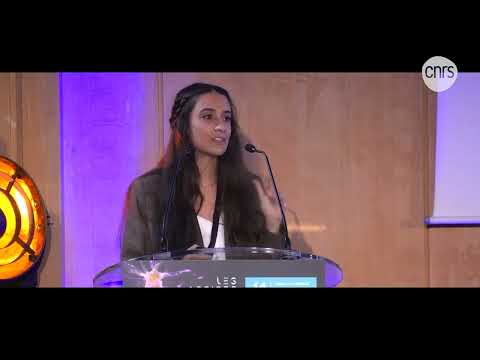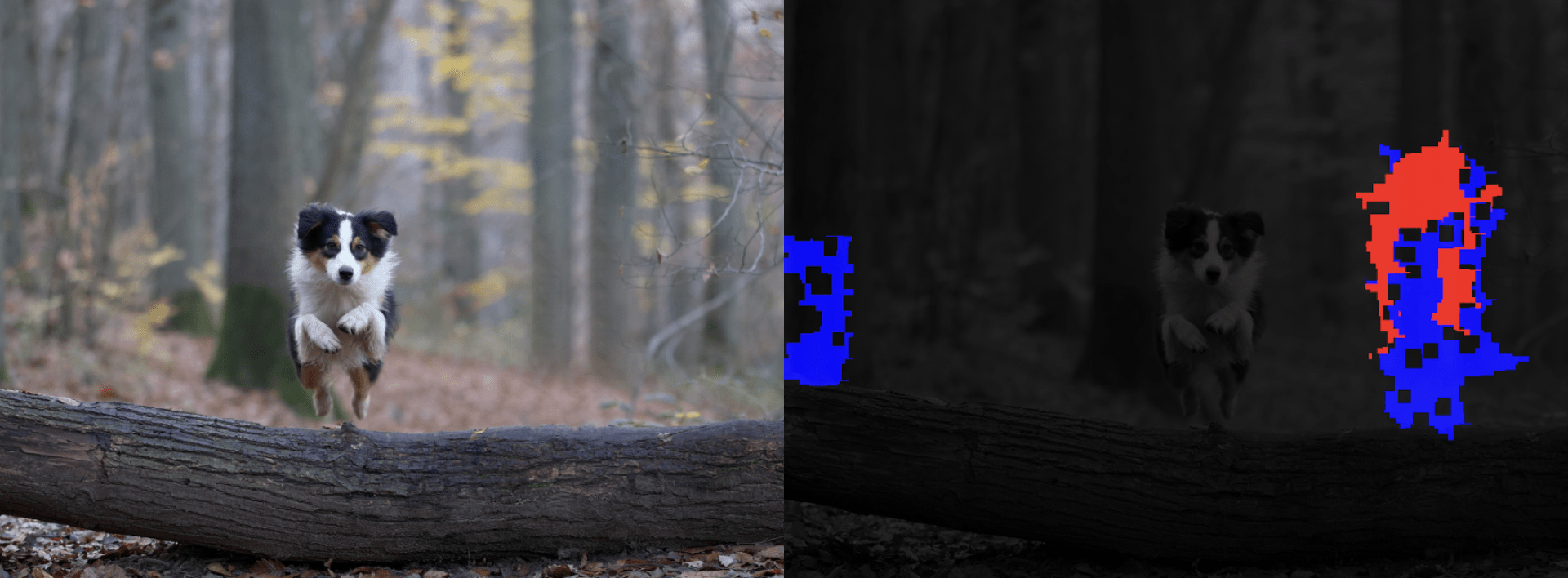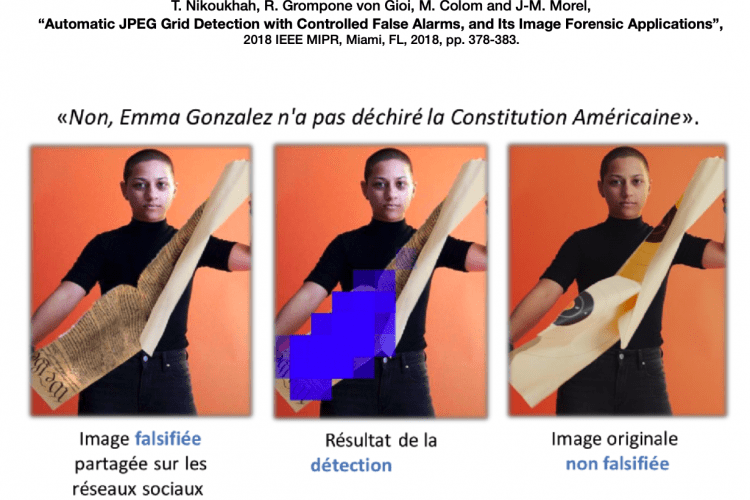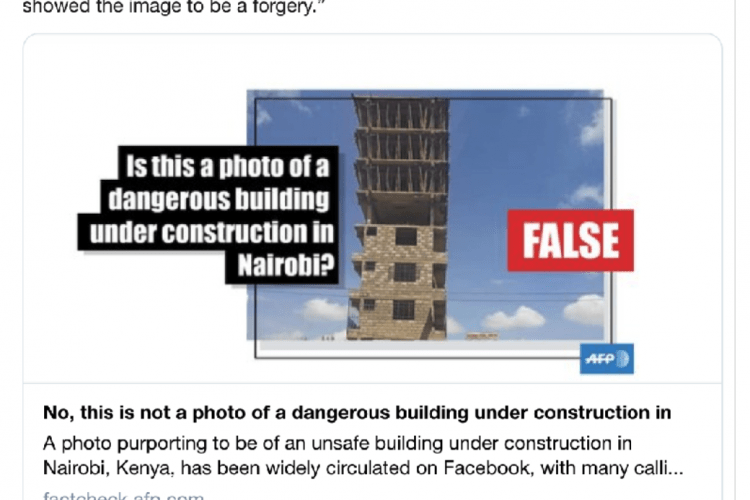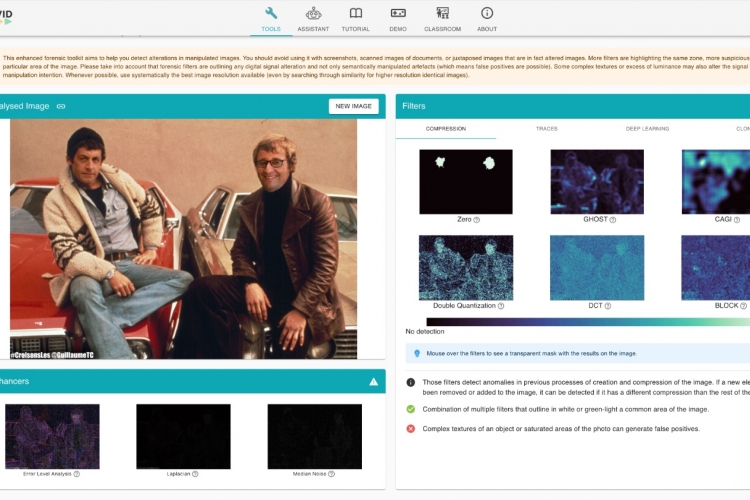Detection of digital image forgery
Illustration of the Centre Borelli's emblematic apporach
A concrete problem of general interest is solved; the solution gives rise to an algorithmic development, published in the IPOL journal and thus easily disseminated.
Reference article
JPEG Grid Detection based on the Number of DCT Zeros and its Application to Automatic and Localized Forgery Detection, Proceedings of the IEEE/CVF Conference on Computer Vision and Pattern Recognition (CVPR) Workshops, pp. 110-118.
In this article, the authors T. Nikoukhah, J. Anger, T. Ehret, M. Colom, J.-M. Morel, R. Grompone von Gioi present an innovative method, called ZERO, for the detection of image forgery based on the impact of JPEG compression. The ZERO algorithm uses the number of zeros in the spectral coefficients to identify the local origin of the JPEG grid, thus making it possible to detect image manipulation by the presence of misaligned or absent grids.Projet soutenu par des utilisateurs d'images
Project supported by image users
This work was supported by several research projects, notably in collaboration with the National Scientific Police Service (SNPS) and the Medialab of the Agence France-Presse (AFP).
ZERO's integration into AFP's InVID-WeVerify verification tool, used by more than 90,000 weekly users in 224 countries, demonstrates its reliability and effectiveness. The algorithm detected real cases of forgery, illustrated in the press.
Wide distribution to fight disinformation
The principles of the ZERO algorithm are taught in courses intended for journalists, notably as part of the university diploma in Media and Information Education between ENS Paris Saclay and ESJ Lille. The method has also been presented at numerous scientific conferences for a variety of audiences and has received extensive media coverage, including popular science articles and interviews in the press, on radio and on television. These initiatives demonstrate the impact of the Centre Borelli's work in the fight against misinformation and visual manipulation.
PhD Thesis on image forgery
Publications
- Q. Bammey, "Synthbuster: Towards Detection of Diffusion Model Generated Images," in IEEE Open Journal of Signal Processing (OJSP), 2023.
- Y. Li, M. Gardella, Q. Bammey, T. Nikoukhah, R. Grompone von Gioi, M. Colom, J.-M. Morel. "A Signal-dependent Video Noise Estimator Via Inter-frame Signal Suppression", Image Processing On Line (IPOL), vol. 13, p. 280-313, 2023.
- T. Nikoukhah, M. Colom, J.-M. Morel, R. Grompone von Gioi. "A Reliable JPEG Quantization Table Estimator", Image Processing On Line (IPOL), vol. 12, p. 173-197, 2022.
- Q. Bammey. "Analysis and Experimentation on the ManTraNet Image Forgery Detector". Image Processing On Line, vol. 12, pp. 457-468, 2022.
- M. Gardella, P. Musé. "Forensic Similarity for Source Camera Model Comparison". Image Processing On Line (IPOL), 2022. Best student paper award – MLBriefs 2022.
- M. Gardella, P. Musé. "Image Forgery Detection via Forensic Similarity Graphs". Image Processing On Line (IPOL), 2022. Best student paper award – MLBriefs 2022.
- Q. Bammey, R. Grompone von Gioi, J.-M. Morel, "Image forgeries detection through mosaic analysis: the intermediate values algorithm." Image Processing On Line, 2021.
- M. Gardella, P. Musé, J.-M Morel, M. Colom. "Forgery Detection in Digital Images by Multi-Scale Noise Estimation". Journal of Imaging, 2021.
- T. Nikoukhah, M. Colom, J.-M. Morel, R. Grompone von Gioi. "Local JPEG Grid Detector via Blocking Artifacts, a Forgery Detection Tool", Image Processing On Line (IPOL), vol. 10, p. 24-42, 2020.
- T. Ehret. "Automatic Detection of Internal Copy-Move Forgeries in Images", Image Processing On Line (IPOL), vol. 8, pp. 167-191, 2018.
Press kit
Illustrations
Video presenting the agorithm
Exposé Tina NIKOUKHAH lauréate du prgm Jeunes Talents L'Oréal -UNESCO
